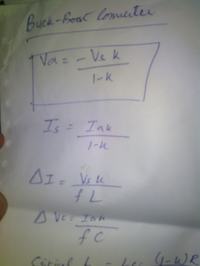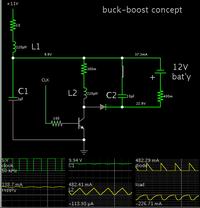assu
Junior Member level 3
Greetings,
I have solar panel which produces following
Vmp=16V
Imp=7.5A
P=120W
Battery to be charged is 12V 45Ah Lead Acid
Now, I will be charging the battery at 14V and 5Amp (i.e., approx 10% of 45Amp)
I have found buck converter would be feasible for this solution but on the other hand if
PV Panel reduces its voltage to 12V due to less sunlight so i will have to boost the voltage while bargaining current less than 5amp
So should i design buck/boost OR Cuk converter for it. As many sources say Cuk is most reliable.
I have solar panel which produces following
Vmp=16V
Imp=7.5A
P=120W
Battery to be charged is 12V 45Ah Lead Acid
Now, I will be charging the battery at 14V and 5Amp (i.e., approx 10% of 45Amp)
I have found buck converter would be feasible for this solution but on the other hand if
PV Panel reduces its voltage to 12V due to less sunlight so i will have to boost the voltage while bargaining current less than 5amp
So should i design buck/boost OR Cuk converter for it. As many sources say Cuk is most reliable.

